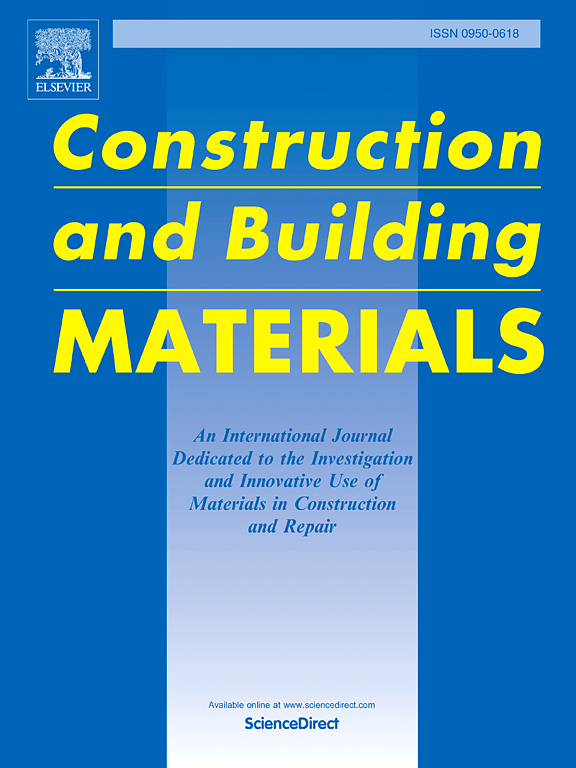Finite element and experimental investigation of the inclined pull-out behavior of hooked-end steel fibers from carbon nanotube-reinforced ultra-high performance concrete
IF 8
1区 工程技术
Q1 CONSTRUCTION & BUILDING TECHNOLOGY
引用次数: 0
Abstract
This research investigates, both numerically and experimentally, the combined effects of carbon nanotube (CNT) and inclination on the pull-out performance of hooked-end steel fibers embedded in CNT-reinforced ultra-high performance concrete (UHPC). For numerical simulation, the finite element method (FEM) was employed using ABAQUS software, with modeling implemented based on cohesive zone theory (CZM). The mechanical properties of the CNT-reinforced UHPC, along with the CZM parameters, were derived from experimental testing across a range of CNT weight percentages (0 %, 0.1 %, 0.2 %, 0.4 %, and 0.6 %). These experimental tests included inclined pull-out tests of both straight and hooked-end steel fibers from UHPC specimens incorporating the aforementioned CNT concentrations. Following validation of the FEM results, a parametric study was conducted to estimate the influence of inclination angle and CNT content on the pull-out response, including peak pull-out force, slip at peak force, pull-out energy, and the extent of matrix spalling observed in each configuration. Results indicate that the inclusion of CNTs enhances the fiber-matrix bond, leading to improved pull-out resistance.
碳纳米管增强超高性能混凝土钩端钢纤维倾斜拉拔性能的有限元与试验研究
本文通过数值和实验研究了碳纳米管(CNT)和倾角对碳纳米管增强超高性能混凝土(UHPC)中钩端钢纤维拉拔性能的综合影响。数值模拟采用ABAQUS软件进行有限元分析,基于内聚区理论(CZM)进行建模。碳纳米管增强UHPC的机械性能,以及CZM参数,是通过在碳纳米管重量百分比范围内(0 %,0.1 %,0.2 %,0.4 %和0.6 %)的实验测试得出的。这些实验测试包括从含有上述碳纳米管浓度的UHPC样品中提取的直端和钩端钢纤维的倾斜拉出测试。在对有限元结果进行验证后,进行了参数化研究,以估计倾角和碳纳米管含量对拉拔响应的影响,包括峰值拉拔力、峰值拉拔力滑移、拉拔能量以及每种构型下观察到的基体剥落程度。结果表明,CNTs的加入增强了纤维与基体的结合,从而提高了材料的抗拔性。
本文章由计算机程序翻译,如有差异,请以英文原文为准。
求助全文
约1分钟内获得全文
求助全文
来源期刊

Construction and Building Materials
工程技术-材料科学:综合
CiteScore
13.80
自引率
21.60%
发文量
3632
审稿时长
82 days
期刊介绍:
Construction and Building Materials offers an international platform for sharing innovative and original research and development in the realm of construction and building materials, along with their practical applications in new projects and repair practices. The journal publishes a diverse array of pioneering research and application papers, detailing laboratory investigations and, to a limited extent, numerical analyses or reports on full-scale projects. Multi-part papers are discouraged.
Additionally, Construction and Building Materials features comprehensive case studies and insightful review articles that contribute to new insights in the field. Our focus is on papers related to construction materials, excluding those on structural engineering, geotechnics, and unbound highway layers. Covered materials and technologies encompass cement, concrete reinforcement, bricks and mortars, additives, corrosion technology, ceramics, timber, steel, polymers, glass fibers, recycled materials, bamboo, rammed earth, non-conventional building materials, bituminous materials, and applications in railway materials.
 求助内容:
求助内容: 应助结果提醒方式:
应助结果提醒方式:


